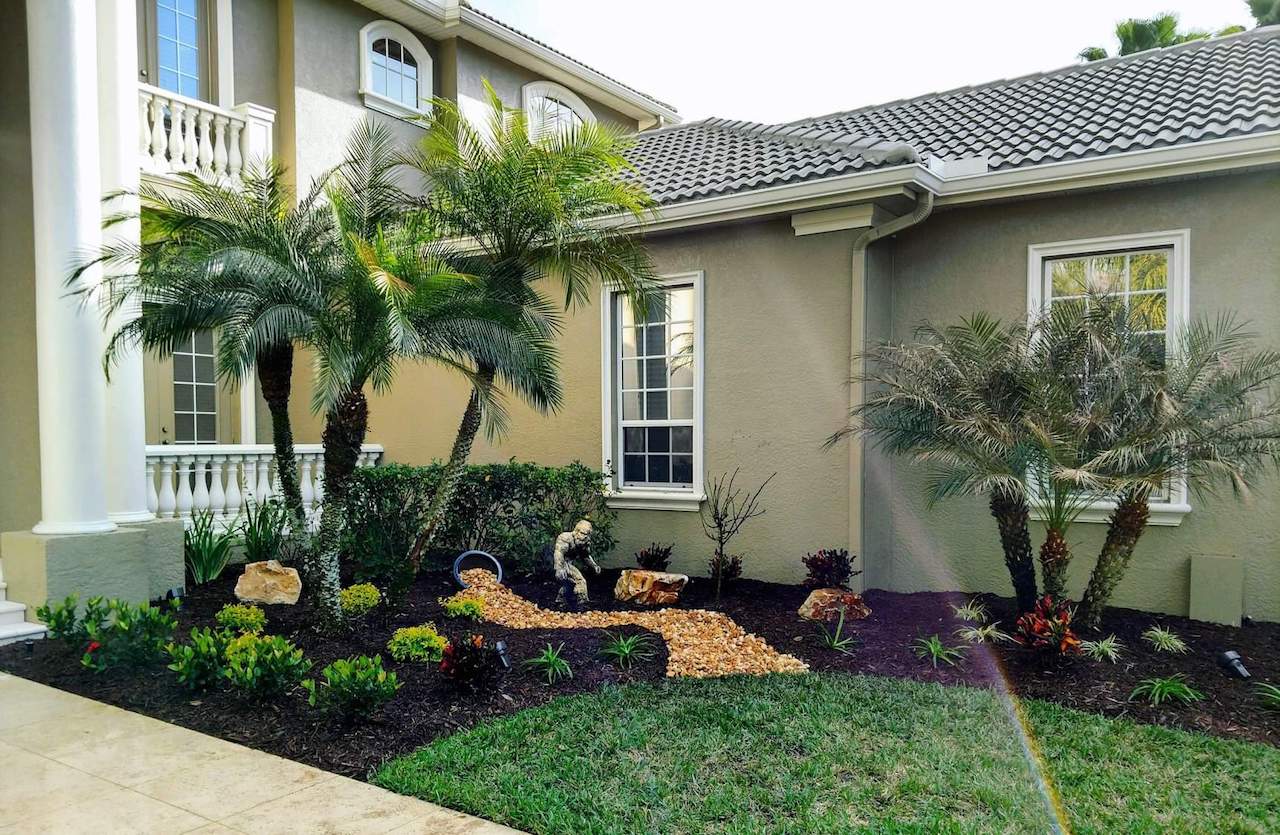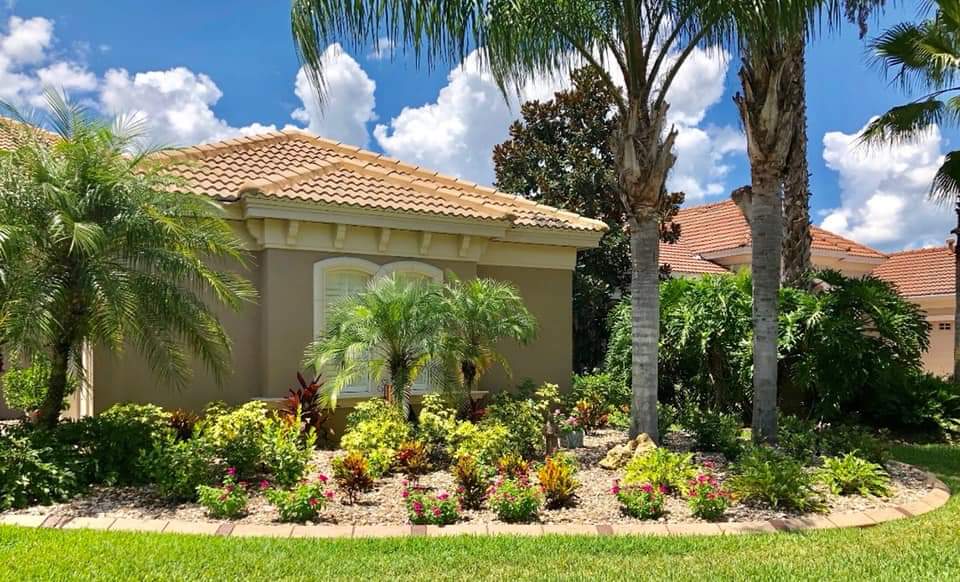A Comprehensive Guide to Designing and Implementing Effective Landscaping Solutions
The art and science of landscape design expand beyond simple aesthetics; they involve a thoughtful integration of style principles, ecological stewardship, and useful application. What techniques can one use to ensure these landscapes not just grow but additionally grow in consistency with their surroundings?

Comprehending Landscape Design Concepts
One may question what foundational elements add to efficient landscape style. At its core, effective landscape style pivots on a number of key concepts that lead the plan and choice of components within an area. These principles include unity, rhythm, proportion, and equilibrium, each serving to create a harmonious exterior environment.
Unity refers to the natural relationship among various parts, ensuring that they function together aesthetically and functionally. Equilibrium can be achieved with unbalanced or symmetrical setups, enabling the landscape to really feel secure and welcoming. Proportion includes recognizing the range of components in regard to each various other and the surrounding atmosphere, promoting aesthetic harmony and convenience.

Analyzing Your Outdoor Space
Prior to carrying out the concepts of landscape style, a comprehensive analysis of your outside room is important. This first examination aids specify the scope of your landscaping project and makes sure that your layout straightens with the unique qualities of your residential property. Begin by evaluating the dimensions of your area, taking specific dimensions to recognize the readily available location for numerous aspects such as gardens, paths, and outdoor patios.
Following, observe the existing features of your landscape, consisting of topography, soil high quality, and water drainage patterns. These variables dramatically influence plant option and placement. Additionally, examine the sunlight direct exposure across different areas throughout the day, as this will impact the kinds of plants that grow in your yard.
Think about the microclimates produced by structures, trees, and various other barriers, as they can impact temperature and moisture degrees. Take note of any kind of existing plants or hardscape aspects that you wish to keep or eliminate. This comprehensive analysis lays the groundwork for a efficient and well-informed landscape design service, ensuring that your design is not only aesthetically pleasing but sustainable and additionally practical for several years to find.
Lasting Landscaping Strategies
Integrating lasting landscaping methods is important for developing an environmentally liable outside area. These techniques not just advertise eco-friendly equilibrium but also enhance the useful and aesthetic value of a landscape. One foundational technique is the utilization of native plants, which require less water and maintenance while supporting local wildlife. Implementing effective irrigation systems, such as drip irrigation, decreases water waste and makes certain that plants obtain adequate moisture.

Another efficient method is the strategic positioning of trees and bushes to offer natural windbreaks and color, thus decreasing energy costs (Palm Desert Landscaping). Rainfall gardens can be incorporated right into the landscape design to my review here manage stormwater overflow efficiently, filtering pollutants before they go into rivers
Selecting the Right Plants
Picking the right plants for your landscape is essential to attaining both aesthetic allure and eco-friendly consistency. The procedure begins with an understanding of your local climate, soil conditions, and the specific microenvironments within your landscape. Examining variables such as sunlight exposure, dampness degrees, and existing flora will aid you select plants that thrive in your one-of-a-kind setup.
Take into consideration incorporating native plants, as they are well-adapted to neighborhood conditions, need much less maintenance, and support regional wild animals. Additionally, choosing a diverse variety of species can improve biodiversity while lowering the threat of disease and bug break outs. It is vital to examine the growth habits, growing periods, and seasonal colors of prospective plants to create a natural and vibrant landscape.
Additionally, consider the meant use the area; for instance, if the location will experience high foot website traffic, choose for resilient ground covers. By attentively selecting plants that line up with both your aesthetic objectives and environmental needs, you can create a lasting landscape that not only enhances your residential or commercial property but additionally contributes favorably to the surrounding community.

Implementation and Upkeep Methods
When the best plants have actually been selected for your landscape, the emphasis shifts to effective application and recurring upkeep methods. Effective setup starts with appropriate site prep work, which includes dirt testing to establish nutrient levels and pH, followed by changing the soil as needed. Very carefully organize plants site here according to their development habits and light needs, guaranteeing ample spacing to advertise healthy and balanced growth.
Irrigation is a crucial aspect of application. Establish a watering routine that thinks about the certain requirements of each plant types, changing for seasonal modifications. Using drip irrigation systems can improve water effectiveness and minimize drainage.
Maintenance methods need to be carried out to make sure the longevity and vigor of your landscape. Routine tasks consist of weeding, mulching, and pruning to manage growth and avoid disease. Fertilizing needs to be carried out based on dirt examinations, offering the necessary nutrients without over-fertilizing.
Keeping track of for bugs and conditions is essential; early discovery can avoid substantial damage. Lastly, seasonal changes to upkeep routines, such as preparing and winterizing perennials for springtime growth, will certainly guarantee that your landscape continues to be aesthetically appealing and healthy and balanced year-round.
Final Thought
Finally, reliable landscaping remedies require a thorough understanding of style concepts, precise analysis of outdoor rooms, and the application of sustainable techniques. The selection of ideal plant varieties plays an important role in improving visual appeal and environmental strength - Palm Desert Landscaping. Successful application and continuous maintenance additionally make sure the durability and vigor of landscapes. By incorporating these components, landscapes can be changed right into beautiful, useful environments that promote biodiversity and contribute positively to area health.
One could question what fundamental components add to efficient landscape style. At its core, effective landscape style hinges on several key principles that guide the arrangement and selection of elements within a room.Choosing the right plants for your landscape is vital to accomplishing both visual appeal and ecological consistency. It is important to assess the growth routines, flowering durations, and seasonal colors of prospective plants to develop a natural and dynamic landscape.
As soon as the ideal plants have been chosen for your landscape, the important link emphasis changes to efficient application and ongoing upkeep approaches.